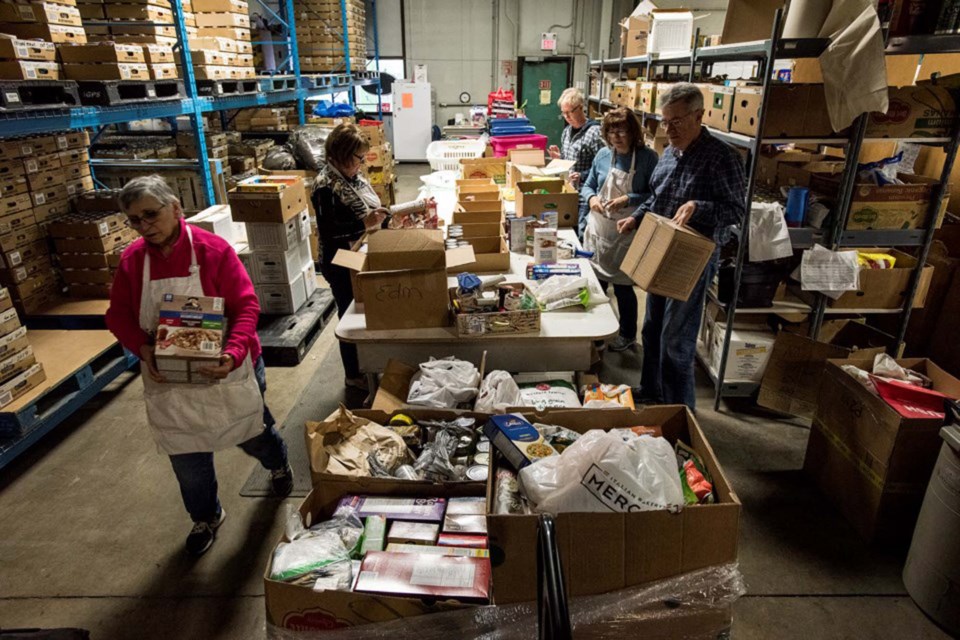DETAILS
2021 HungerCount Findings:
- Some 116,396 Albertans visited a food bank in March 2021. A total increase of 29.6 per cent since the 2019 HungerCount.
- There were more than 44,586 visits to Alberta food banks by children in March 2021.
- Forty-five per cent of Alberta’s food bank users are families.
- Some 15.2 per cent of food bank users receive provincial disability supports.
- In rural Alberta, 30.5 per cent of food bank users are seniors or persons with a disability.
- One in eight Canadians access a community food program, such as a food bank.
It’s going to be a tough winter ahead for food banks in the province, and the “perfect storm” being described in HungerCount 2021 isn’t referring to the weather.
According to the latest survey of food bank use in Canada, much progress had been made against a swirl of demanding negative forces over the last several years. By late 2019, food bank use had even stabilized.
Of course, that was two years ago.
“What we did not foresee was a global pandemic. The economic impact of COVID-19, let alone the health impact, was uncharted territory,” the report reads.
Food bank usage itself is pretty challenging to compare from year to year, so the HungerCount — a one-month snapshot — offers the next best alternative. In March 2021, there were a recorded 1.3 million visits to food banks across Canada, an increase of almost 20 per cent from the same snapshot in 2019.
Dr. Sylvain Charlebois, senior director of the Agri-Food Analytics Lab at Dalhousie University, is quoted in the report as warning that there was a “perfect economic storm” on the horizon, referring to the combination of high unemployment, rapid food inflation, and rising housing costs.
As the big picture focuses in even closer to this province, the report reveals Albertans’ usage of food banks is among the highest in the entire country.
“It’s staggering to see these numbers in Alberta, but not surprising with how hard hit the province was largely due to the pandemic,” offered Arianna Scott, interim CEO of Food Banks Alberta. “Our member food banks across Alberta have all been reporting a surge in food bank access, which includes a new population of Albertans accessing their local food bank largely due to increases in rental or housing costs, increased food costs, unemployment, and other pandemic-related circumstances.”
The St. Albert Food Bank didn’t see the sharp increases in clients many other agencies experienced as COVID-19 reared its strange, destructive head in March 2020. That was largely because many people in this city were able to access the Canada Emergency Response Benefit and then the Canada Recovery Benefit, according to St. Albert Food Bank executive director Suzan Krecsy.
Now that the pandemic is at the year-and-a-half mark, she has seen more and more familiar faces coming back to the food bank as clients have had to have their files reactivated.
“We've been predicting all the way along that it would be the fall and early winter when we would see people really struggling. We haven't seen some of our clients that we've seen throughout the years. We didn't see them for 18 months, because they were either on CERB or CRB,” she began.
“Now that CRB has ended, we're starting to see our folks that we haven't seen for 18 months coming back in now. We've been predicting this all the way along that it was CERB and CRB that was keeping people afloat.”
The end of the year is perennially the most challenging time of year as household bills accumulate further.
“It's always troubling: Christmas is coming, and we're projecting an even busier time. And it's not just Christmas. It's after Christmas as well, and historically, that's when donations are reduced. People get busy with other things. Those are the times that we worry about because by then we'll have winter bills coming in — food, inflation, the price of gas, and electrical bills coming in — all of that is going to hit real hard. We're expecting a pretty busy January, February, March,” she continued.
"We're planning for bad and hoping for not too bad."




